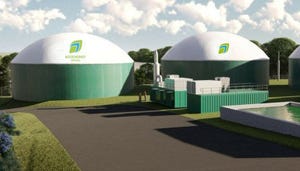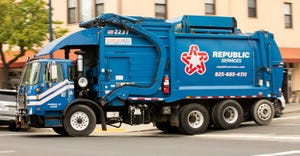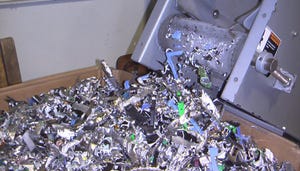How To Prepare Your Landfill For Financial Assurance
December 1, 1993
Ellen Allen and Greg Sheppard
If you've traveled from A to Z in Subtitle D, you have no doubt reached the chapter on long-term financial assurance. While state regulations may vary, Subtitle D specifies that landfills obtain an amount sufficient to close and cap the site and perform care and maintenance for 30 years after closure.
If a landfill fails and leaves an environmental disaster, financial assurance protects state and federal governments from liability by making funds available for the site's closure and capping and for post-closure care and maintenance.
Funding financial assurance can be attained through corporate sur-ety bonds, irrevocable letters of cre-dit, trust funds, insurance, financial testing and also third party guarantees. The three most commonly used methods are corporate surety bonds, trust funds and irrevocable letters of credit.
Operating Practices Because of the tremendous financial liability and long-term implications of insuring landfills, insurance companies make judgments based on the engineering characteristics of each site. The bonding institution performs yearly evaluations to determine and minimize the amount of exposure. However, responsible operating practices during the ac-tive life of a landfill will minimize risks during the post-closure era.
A checklist, beginning on page 32 in this issue, represents the type of engineering items that a bonding institution may use to evaluate your site when they are considering providing financial assurance.
Landfill development is an ongoing construction project. Keep eventual closure in mind, even during current operations and in development stages. Closure should be a phased activity performed concurrently with the development of disposal cells. The goal of sanitary landfill closure is to minimize post-closure maintenance and to protect human health and the environment.
Take preventive measures during closure to control or eliminate leachate generation and decomposition, gas, surface runoff, waste exposure, blowing paper, debris, and vectors. When an insurance company performs an evaluation, it will look for evidence of planning ahead.
Plan for construction of the final cap, which will reduce the amount of water that could infiltrate the solid waste and reduce the amount of leachate and decomposition gas generated. The final cover should control surface water runoff, which encourages vegetative growth and enhances post-closure end uses.
Frequent Inspections Inspect the site at least monthly or more frequently if problem areas are detected. Areas of inspection should include: access and security control; erosion and sediment drainage; final cover sediment; subsidence and displacement; vegetative cover; integrating surface water drainage ways and impoundment; integrity of leachate collection and detection; groundwater monitoring systems; integrity of site bench marks; and gas migration. It is important to record each expansion.
The checklist provides a basis for routine maintenance but may be expanded to meet the site specifics of your facility.
Ongoing operations can impact the integrity of the closure plan and how the landfill "performs" during the closure phase. Proper refuse handling maximizes the life of the landfill and controls leachate generation during post closure. For example, spread refuse into thin layers (two feet or less) and work garbage as each load comes in. With a landfill compactor or other tract-type equipment, compact the landfill cells to maximum density.
Accurate record keeping is one of the most important duties of landfill managers and personnel. Solid waste regulations require detailed documentations on amounts received as well as the description and origin of the waste. Thorough inspection and identification of unacceptable wastes prior to landfilling protects against potential contamination problems and helps an operator acquire financial assurance.
Inspect sedimentation control ponds and structures weekly, and more often after heavy rainfall. Routinely remove and correct excess sediment and install additional silk fences, straw bails or diversion ditches as needed.
Inspect the site continually for erosion problems and subsequent leachate seeping. If any problems are identified, they should not be allowed to compound. The site operator should inspect and check collection and treatment facilities daily. Inspect the conditions of the gas venting system and routinely monitor methane concentrations in buildings on and around the site.
Consistent and sound operation practices are the most effective preventive measures a facility owner can take to help preserve the long-term integrity of the facility during post closure. Many states require operator certification and training to ensure the most efficient operation of today's landfills.
To identify unacceptable waste, train operations personnel to recognize the materials. Everyone from the gate scale house attendant to the landfill "spotters" and equipment operators should be trained. The landfill owner and operator must have a thorough understanding of products and wastes being produced by industries and manufacturing facilities in the service area. If the facility generates a hazardous waste, find out where it is being disposed. Many states have conducted inventories of generated hazardous waste disposal and report this information through state regulatory agencies.
Corporate Surety Bonds Corporate surety bonds, the least understood of the various funding mechanisms, may be attained through an insurance company licensed to conduct business in the line of surety credit. A limited number of surety companies offer credit for solid waste landfill bonds.
As part of their overall review of a landfill operation, the surety company will review engineering reports, financial information on both the operation and its owners, resumes on key personnel, demographic information on the area where the site is located, waste shed information and any existing waste stream agreements with counties or municipalities.
The surety company's evaluation is targeted toward survival: Can the site meet its current obligations, maintain sufficient profit for future expansion and complete the landfill operation plan (including capping, care and maintenance) with the waste stream and tipping fees projected for the operation?
When reviewing the financial condition of the site, the surety wants to know that an operation can absorb un-foreseen expenses without creating financial difficulties for the operation. If the landfill operator can provide detailed information, the surety is more likely to extend credit to the operation.
The surety company reviews a great deal of information when evaluating a landfill. Accurate financial ac-counting is crucial to a review. Resumes of key personnel and details about their work history are important and should include operators as well as owners.
Any of the landfill operation's waste disposal agreements with surrounding counties or municipalities should be confirmed in a written agreement. This waste stream guarantee builds a great deal of comfort in the eyes of a surety company and aids in a good review. Op-eration and expansion plans are also important. The surety company wants to be advised of any changes the landfill operators anticipate in the next few years.
Complete cooperation and disclosure of information greatly influence a surety company. A surety can be one of the best possible business partners if landfill managers keep them aware of ongoing conditions and comply fully with the company's requests.
You May Also Like


